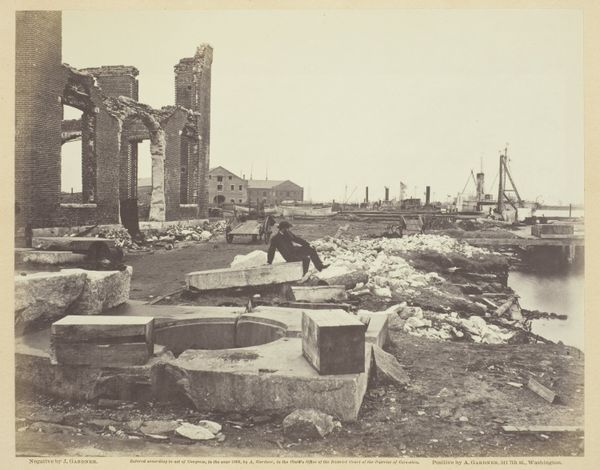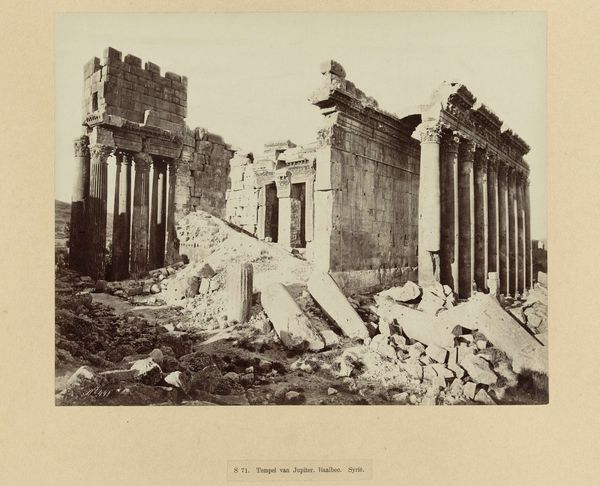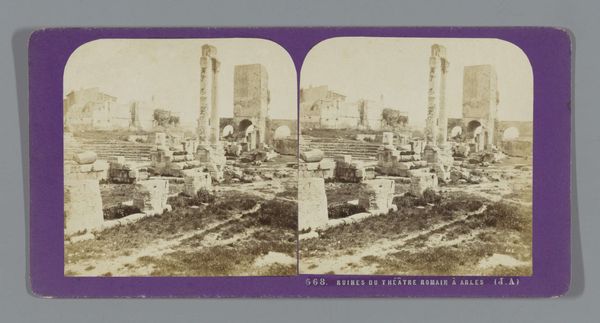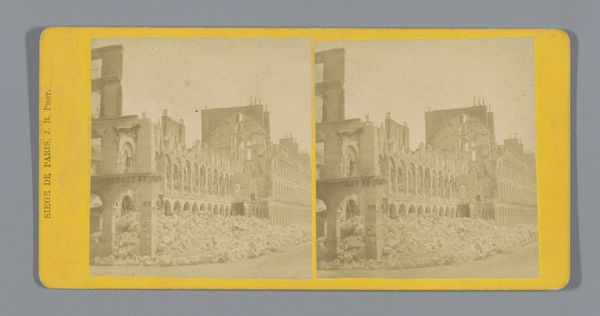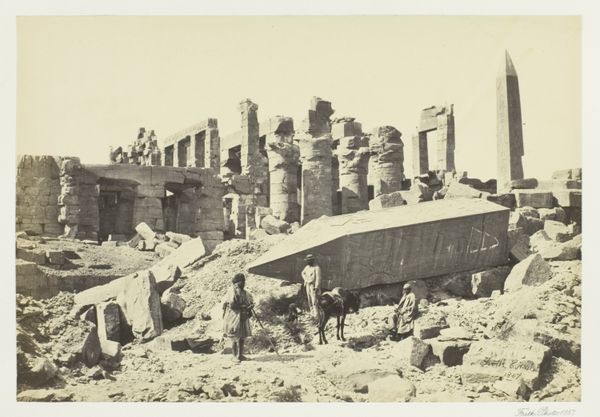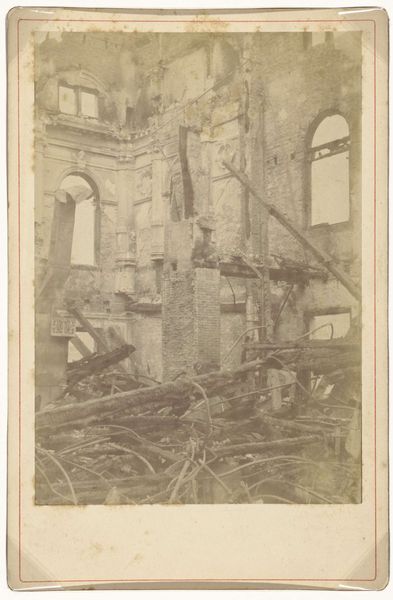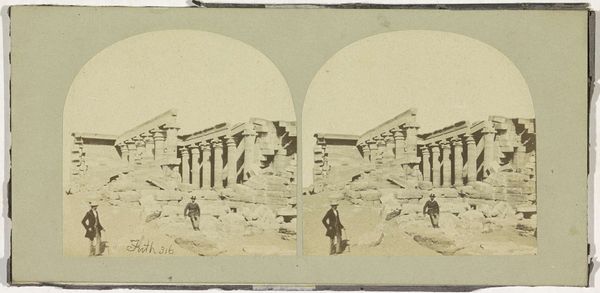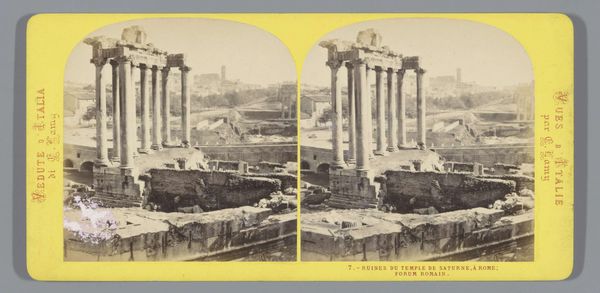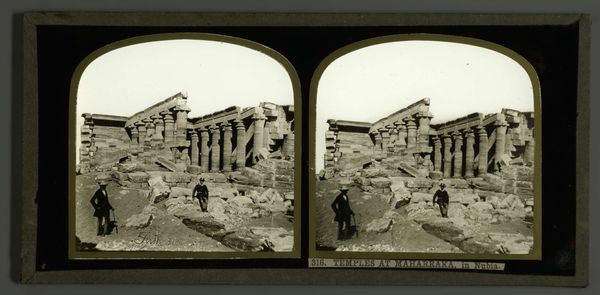
Court House, seen through ruins of Fifth National Bank 1871
0:00
0:00
silver, print, photography, photomontage, albumen-print
#
16_19th-century
#
silver
# print
#
landscape
#
photography
#
photomontage
#
cityscape
#
albumen-print
Dimensions: 9.3 × 8 cm (each image); 10 × 17.5 cm (card)
Copyright: Public Domain
Curator: What strikes me immediately about this image is the weight of loss; the sky itself seems to press down on the ruins. It’s such a somber photograph. Editor: This is a silver print made in 1871 by Lovejoy and Foster. Its title is "Court House, seen through ruins of Fifth National Bank," and it’s a depiction of the aftermath of the Great Chicago Fire. Looking at it now, in the 21st century, I’m compelled to think about not only the immediate devastation that followed the fire, but its lingering impact on the reconstruction and reimagining of the city. The fire wasn’t merely an event; it was a crucible that reshaped Chicago’s identity. Curator: Yes, the towering remnants of the bank act almost as a funereal archway framing the more distant courthouse. It's quite arresting. The juxtaposition of these structures—the symbol of finance and the symbol of justice—feels heavy with symbolism, particularly considering the widespread economic disruption that followed the fire. Does it imply a questioning of those institutions in the face of disaster? Editor: It’s tempting to see it that way. The photographic process itself carries meaning here. This was produced as a stereograph, designed to give the viewer a sense of depth and immediacy. It aimed to put the viewer *in* the scene of devastation, to witness the raw aftermath firsthand. Photography in this era becomes almost an act of bearing witness. Note the pair of figures dwarfed by the ruins - a tangible reminder of how collective trauma impacts ordinary people. Curator: Indeed. And the composition really draws your eye—the way the rubble in the foreground leads back to the figures. There’s almost a sense of narrative being built. Was this a conscious choice to evoke empathy? Editor: I think so. Consider how quickly these images circulated—providing visual evidence for aid efforts. These weren't neutral depictions; they were potent calls for support and solidarity in a city grappling with monumental loss. Curator: Looking at it this way reframes my initial reading, emphasizing resilience in the face of unimaginable loss rather than just desolation. Editor: Precisely. It’s a potent reminder that even amidst the ashes, new forms, institutions, and perspectives can arise, forging new futures. This silver print is more than a document of destruction; it's a testament to collective trauma and human reinvention.
Comments
No comments
Be the first to comment and join the conversation on the ultimate creative platform.
